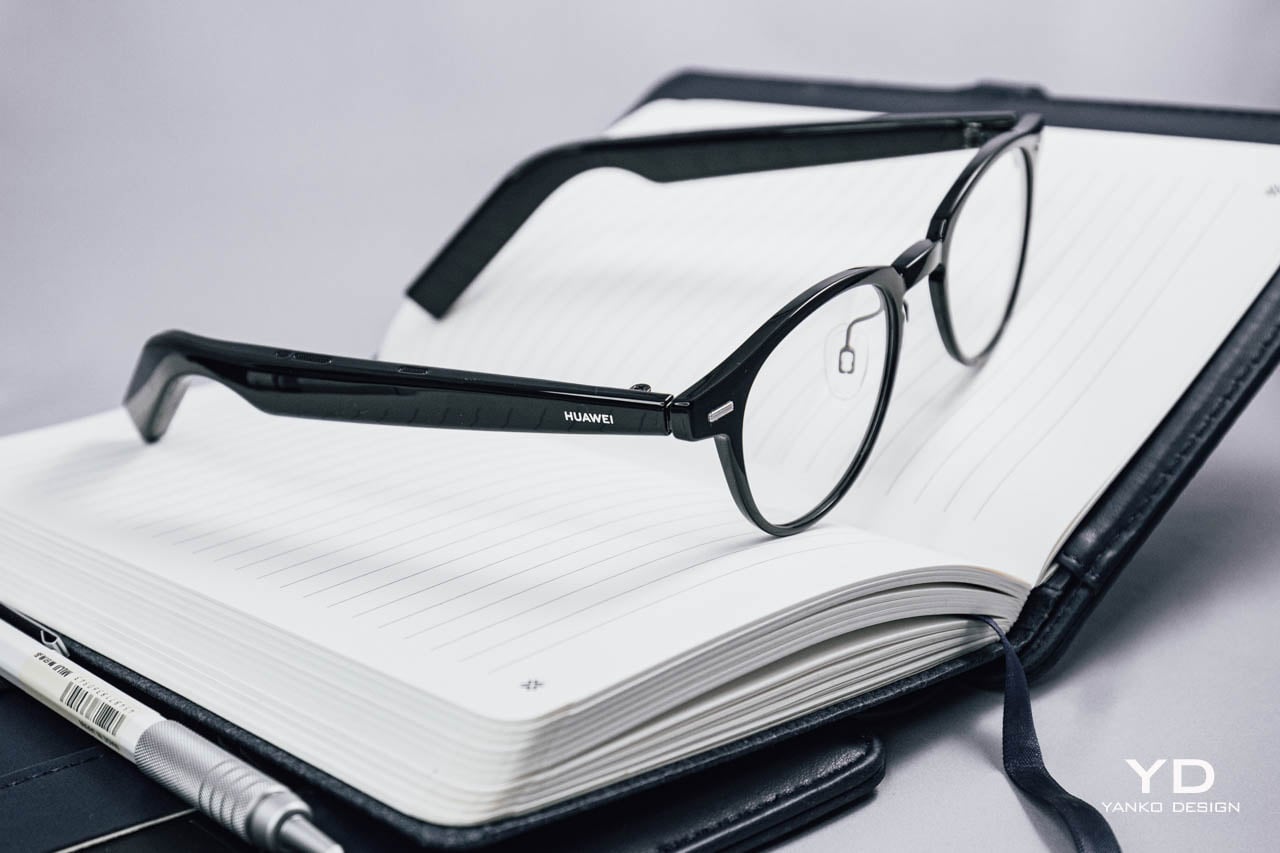
PROS:
- Slick design that cleverly hides tech
- Lightweight and comfortable
- Great Bluetooth range (20+ feet)
CONS:
- Missing the lower-end bass notes
- Audio leakage means others can hear you
- Lack of outlined touch-sensitive area
- Limited global availability
While the landscape for smartphones, tablets, and laptops gets increasingly competitive with legacy and new brands all fighting for eyeballs, Huawei’s always focused on its own trajectory towards innovation and cutting-edge tech. There’s a lot Huawei can offer beyond the everyday smartphone or laptop, with the company foraying comfortably into smart home audio and now even smart glasses. The tech giant announced the HUAWEI Eyewear, a hybrid pair of stylish spectacles that house some impressive tech underneath. No, these aren’t AR glasses, but are rather audio devices disguised as eyewear. Pop them on and you don’t need earbuds, or that’s at least what Huawei wants you to believe. We managed to get our hands on a pair to test them out. Chances are you won’t be able to buy them anytime soon if you’re in the USA, Canada, or the EU (they’re slated to be available in China, Japan, and Malaysia)… but it’s important to look at it as a milestone of what’s capable in the tech world, and also as a proof of concept for a new idea – the idea being, “Can spectacles replace AirPods? And should they?”
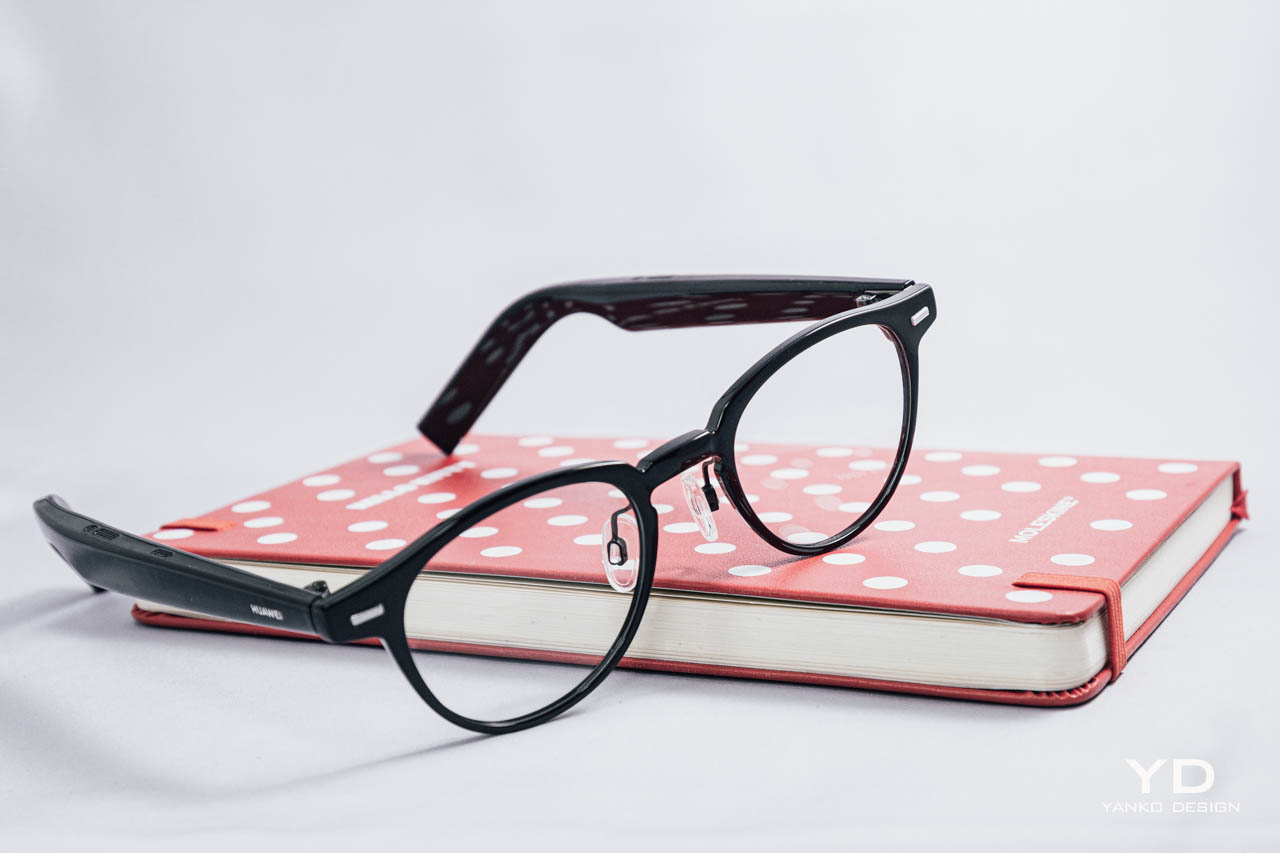

The Eyewear comes with a contact-point charging cable that plugs into the base of the stems
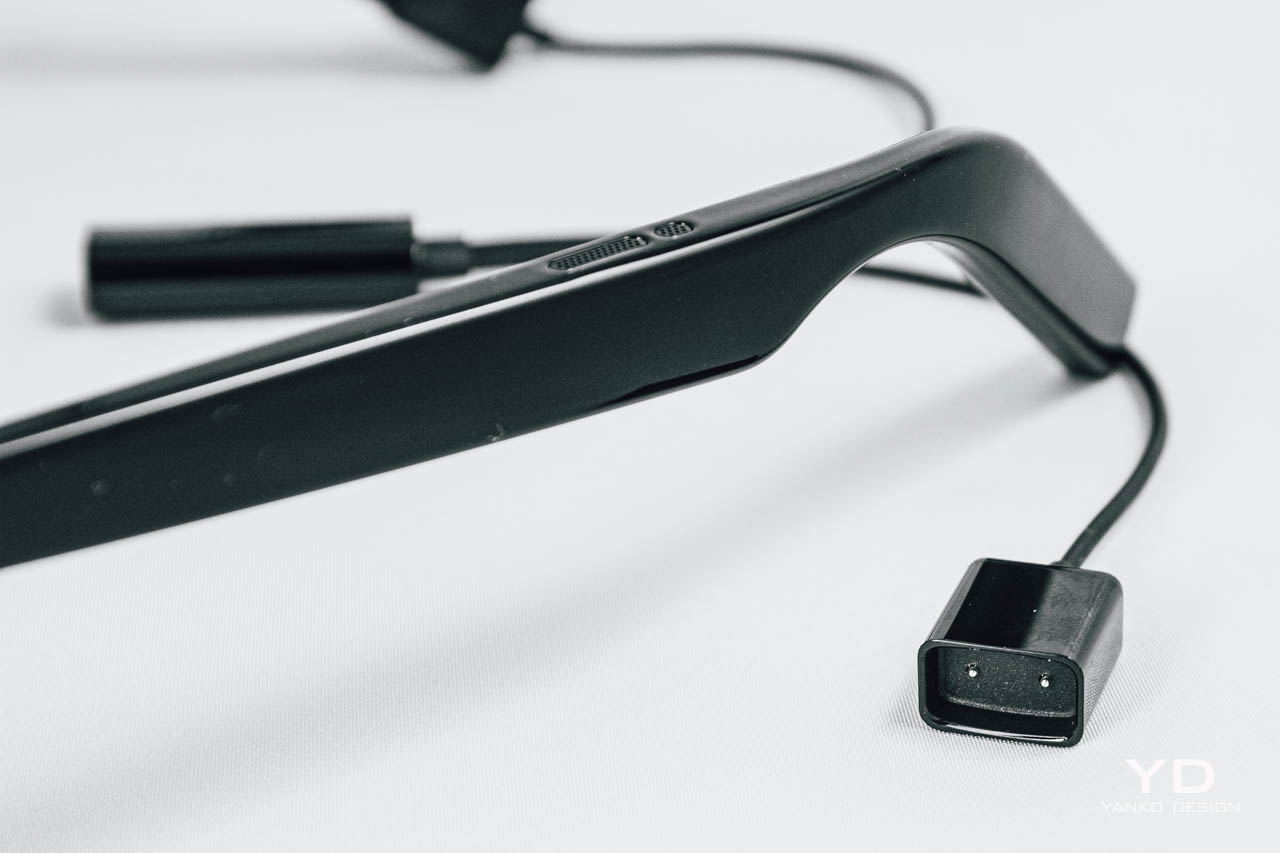
In theory, this means it’s somewhat possible (although not advisable) to charge these while you’re wearing them
First Impressions
If there’s one thing I give major props to Huawei for, it’s the fact that they take design incredibly seriously. I don’t think I’ve come across a single Huawei product that’s had a boring, lackluster design. Their MateBook X Pro was easily one of the most spectacular MacBook competitors on the market, the Sound X saw Huawei partner with Devialet to create a magical speaker that looked as powerful as it sounded, and perhaps my personal favorite, the P50 Pocket really pushed the boundaries of what a luxury foldable phone could look like. Similarly, the HUAWEI Eyewear look incredibly stylish – but more importantly, they look like stylish glasses, not stylish tech wearables. Huawei’s been incredibly careful in ensuring that its spectacles are slim, lightweight, and fashionable. One could argue that the spectacles feel a little TOO lightweight, although that might sound a little pedantic. The temple stems house “ultra-thin 128 mm² large amplitude speakers” that beam-form the audio right into your ear when you’re wearing the spectacles. You don’t need earpieces, and these aren’t bone-conducting spectacles either. The audio drivers are designed to channel the audio waves right to your ear (somewhat similar to the ones found on VR headsets), giving you a bespoke listening experience while you have the glasses on. It’s a clever idea but it begs the question – why?

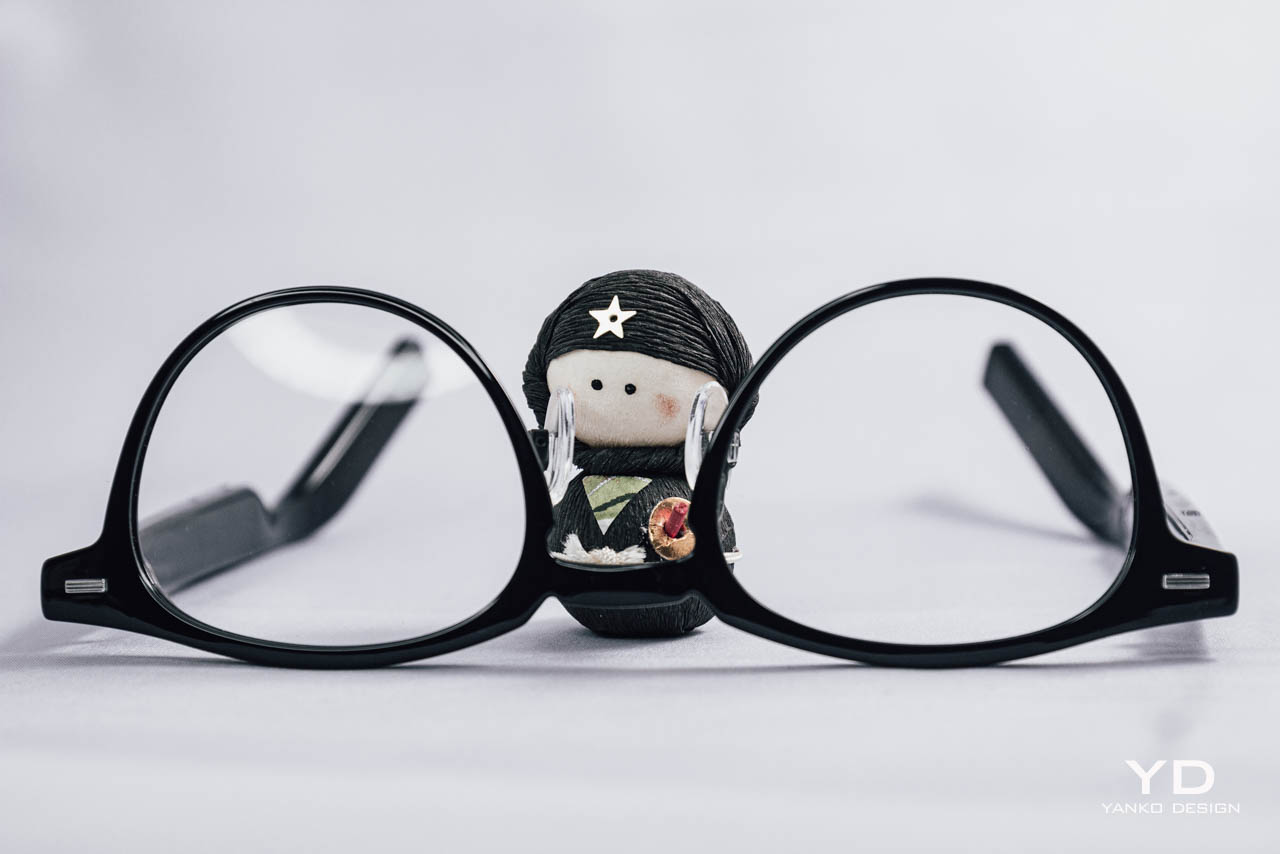
The Idea
Quite a few questions come to mind with this device. For starters, why does such a device even need to exist? Will the average Joe and Jane ditch their TWS earbuds for it… and more importantly, will people actually go through the hassle of getting their prescription lenses fitted into this ‘audio eyewear’? The answers I personally have don’t give much clarity either. The eyewear are tech accessories, designed to support your existing gadgets, be it the phone, laptop, or tablet. The eyewear itself doesn’t rely on any OS or cooperation from a third-party company that may be restricted from working with Huawei. It’s an easy win for the tech conglomerate, and shows their ability to innovate beyond your ‘run of the mill’ products. Audio eyewear is a niche not many companies have explored. Bose tried making something similar and abandoned the project almost immediately. Aftershokz and Zungle have created audio glasses in the past too, but they rely on bone conduction – an audio technology I personally detest and wouldn’t consider a replacement for traditional in-ear audio devices. Facebook went as far as partnering with Ray-Ban to create glasses with cameras built into them, although I don’t remember anyone being excited or optimistic about those. In fact, it’s been over a year and Facebook (sorry, Meta) has been suspiciously quiet on sales and whether the product’s been a commercial success. My gut feeling is that it hasn’t. Here’s what my thoughts are with the HUAWEI Eyewear (and they’re solely my personal opinions) – people like glasses the way they are. They’re a hybrid fashion/medical device (given that they correct vision), so there’s a reticence when it comes to injecting consumer tech into them. My specs sit on my face nearly 17-18 hours a day, so having speakers that close to my ear for those prolonged periods of time just feels like something I wouldn’t want. Besides, the fact that I’d have to take my specs off to charge my earphones seems incredibly counterintuitive because I’m practically blind without my specs. Am I the HUAWEI Eyewear’s intended audience, though? Probably not. So let’s just put a pin in that and take a gander at how they work and how they sound.

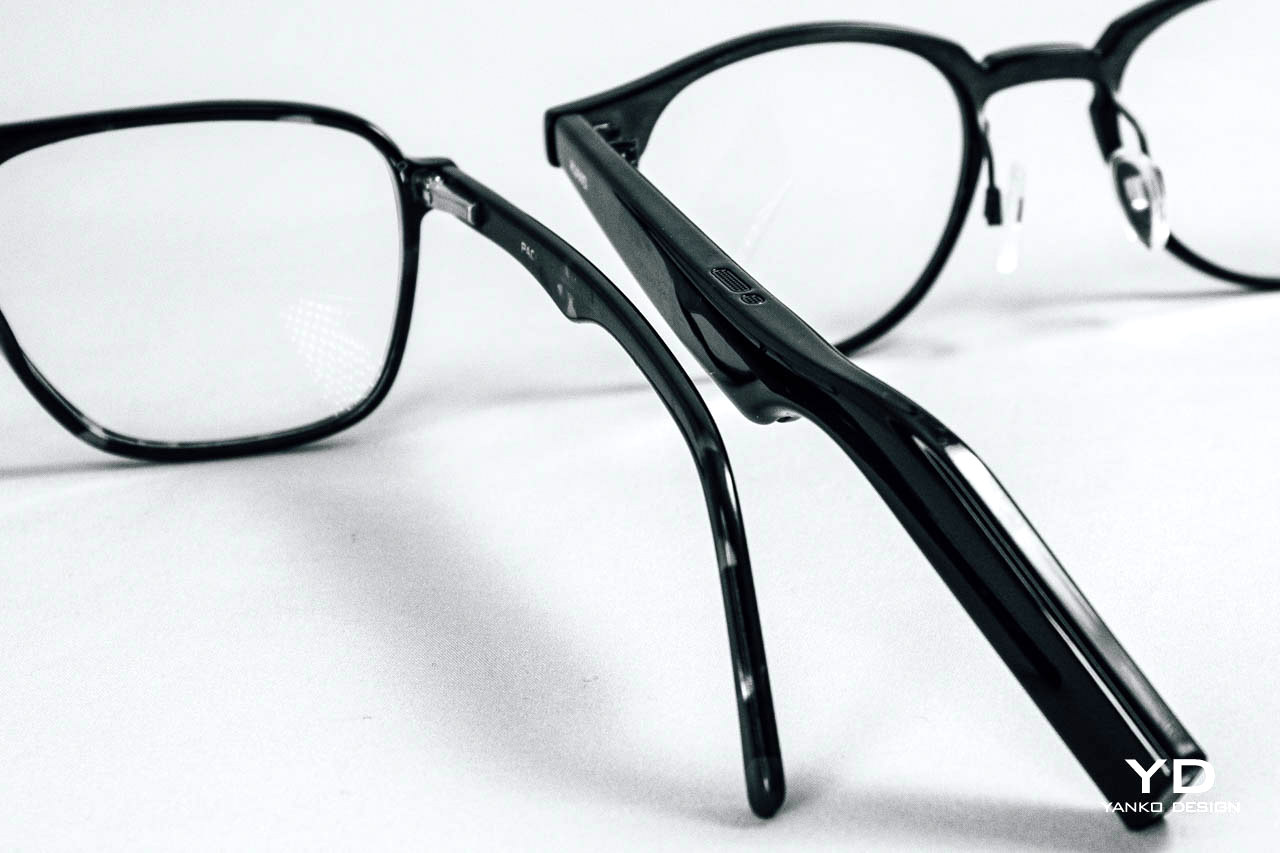
A comparison between the temple stems on a regular pair of acetate glasses and the HUAWEI Eyewear
The Device
The HUAWEI Eyewear, objectively, are incredibly stylish spectacles with an open acoustic design that delivers audio straight to your ear without blocking them – this means you can listen to music and calls while still hearing the world around you. It’s impressive on paper, but not as impressive as the fact that the eyewear look deceptively like regular eyewear. They come in a variety of styles and formats, from wayfarers to aviators to rectangular and round frames in full-rimmed and half-rimmed varieties. The tech fits in the spectacles’ stems, which are, impressively enough, not too thick and don’t add too much weight to the frames either. While wearing them, they didn’t feel too heavy, and more importantly, they stayed in place without slipping off. The spectacles grip the face pretty well, thanks to the arc-shaped stems and the elastic hinges that flex comfortably as you wear them. The HUAWEI Eyewear comes with an all-day battery, supports connections with multiple devices (up to 2 devices simultaneously), and just like your TWS earbuds, comes with touch input on the side that lets you tap, slide, press, and pinch to control playback and answer/reject calls. Huawei touts the Eyewear’s Reverse Sound Field Acoustic System which allegedly provides a private listening experience, and a hydrodynamic wind-proof microphone design that reduces noise during calls… so we decided to put the Eyewear to the test to see how good it was.

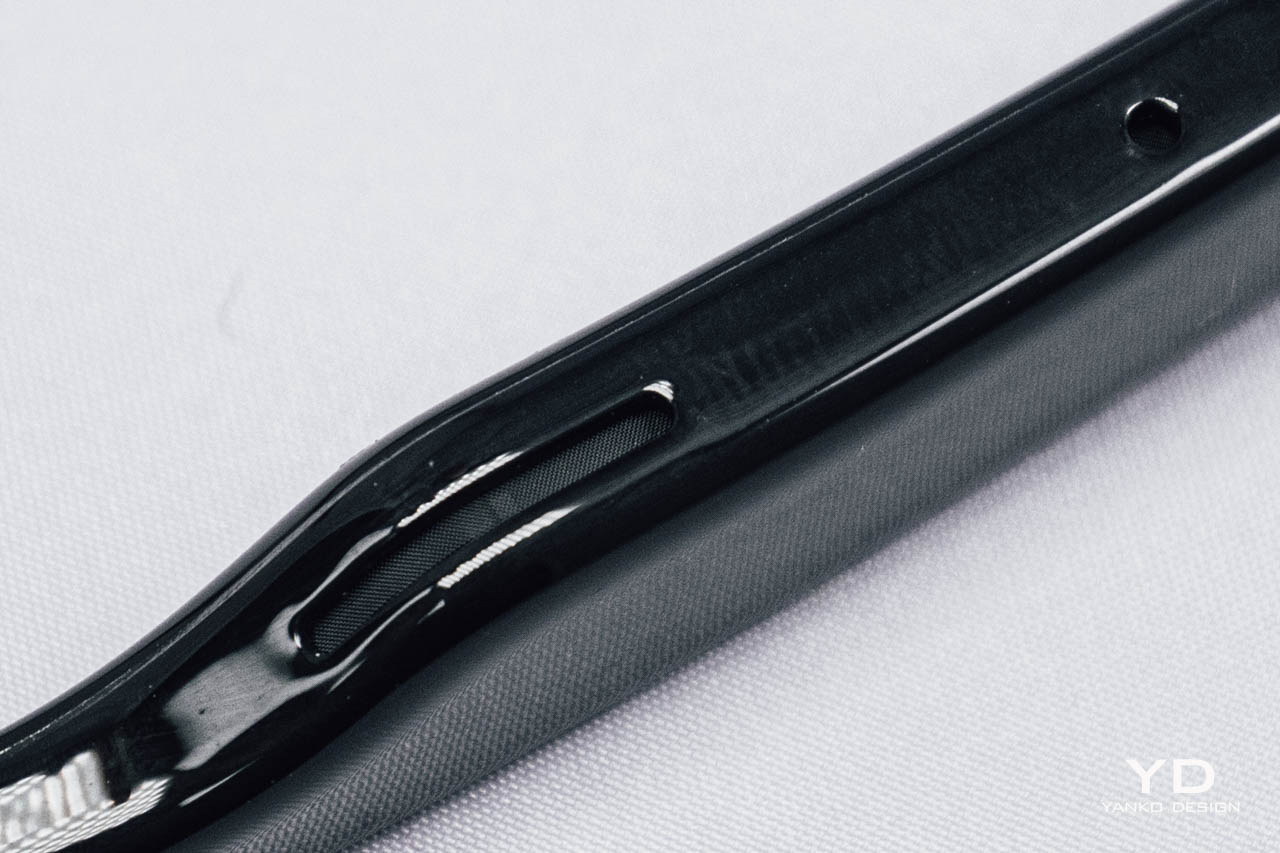
The Audio
Ultimately, the true value of Huawei’s audio-glasses comes from exactly how good (or bad) the audio is… and the verdict isn’t particularly rosy. Here’s where things work in favor of the glasses – the audio isn’t bad. It doesn’t really compare to having actual AirPods in your ears, obviously… but then again, what it attempts is completely different from your average earphones. The sound is clear and distinct, but lacks detail, especially in the lower frequencies. I tried wearing a hoodie to see if it affected the audio and surprisingly, it enhanced my listening experience. The hoodie contained the sound waves, amplifying them and making my audio louder and more discernible. However, the claim that the HUAWEI Eyewear provides a private listening experience falls a little flat on its face. There’s a significant amount of audio leakage, and anyone sitting/standing within 3 feet from you will most likely be able to hear what you’re hearing. It almost seems like ‘open ear design’ and ‘private listening experience’ don’t ever go hand in hand, because even bone-conducting earphones have the same problem. A hoodie might help prevent excess sound leakage, but that seems like a rather odd way to enforce privacy, in my opinion.
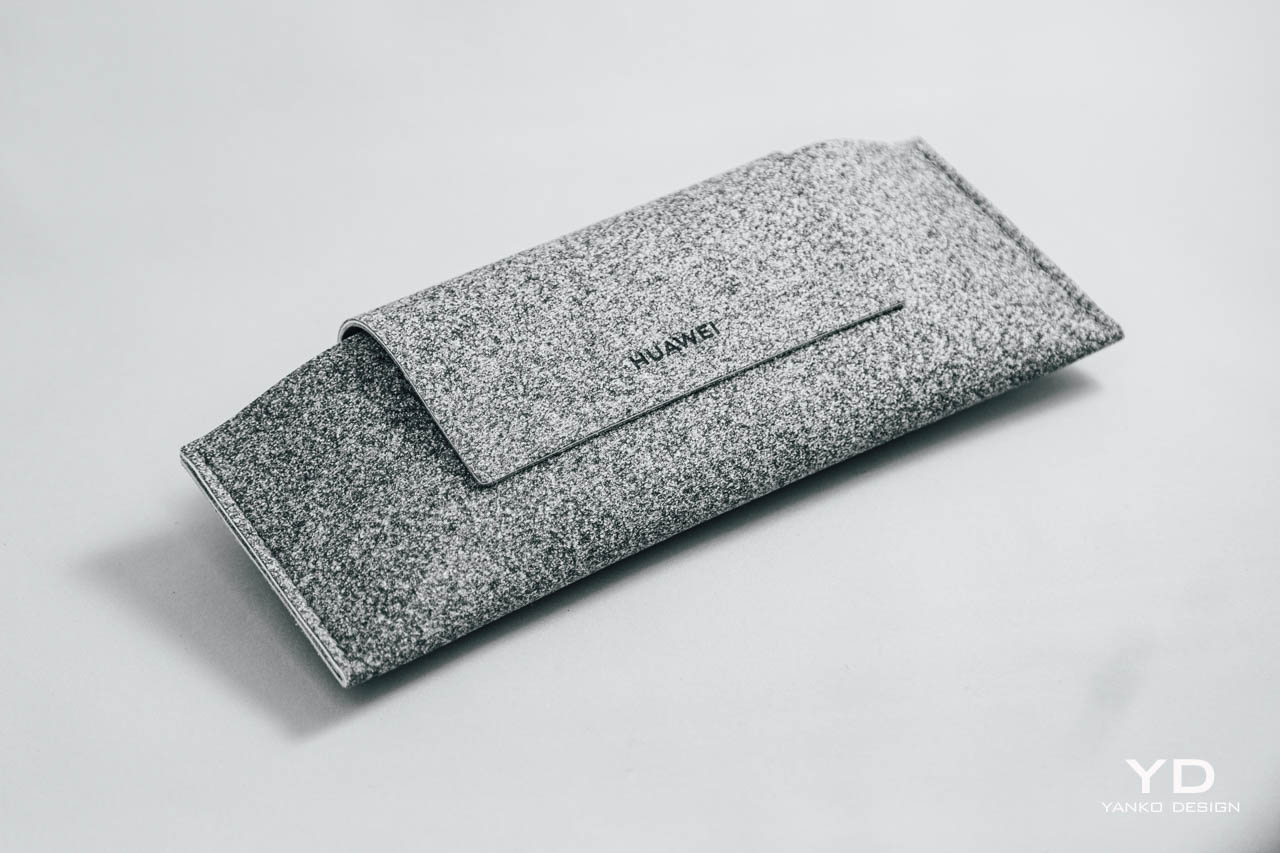
The Eyewear comes along with a solf microfiber-lined fabric case that makes it easy to carry around
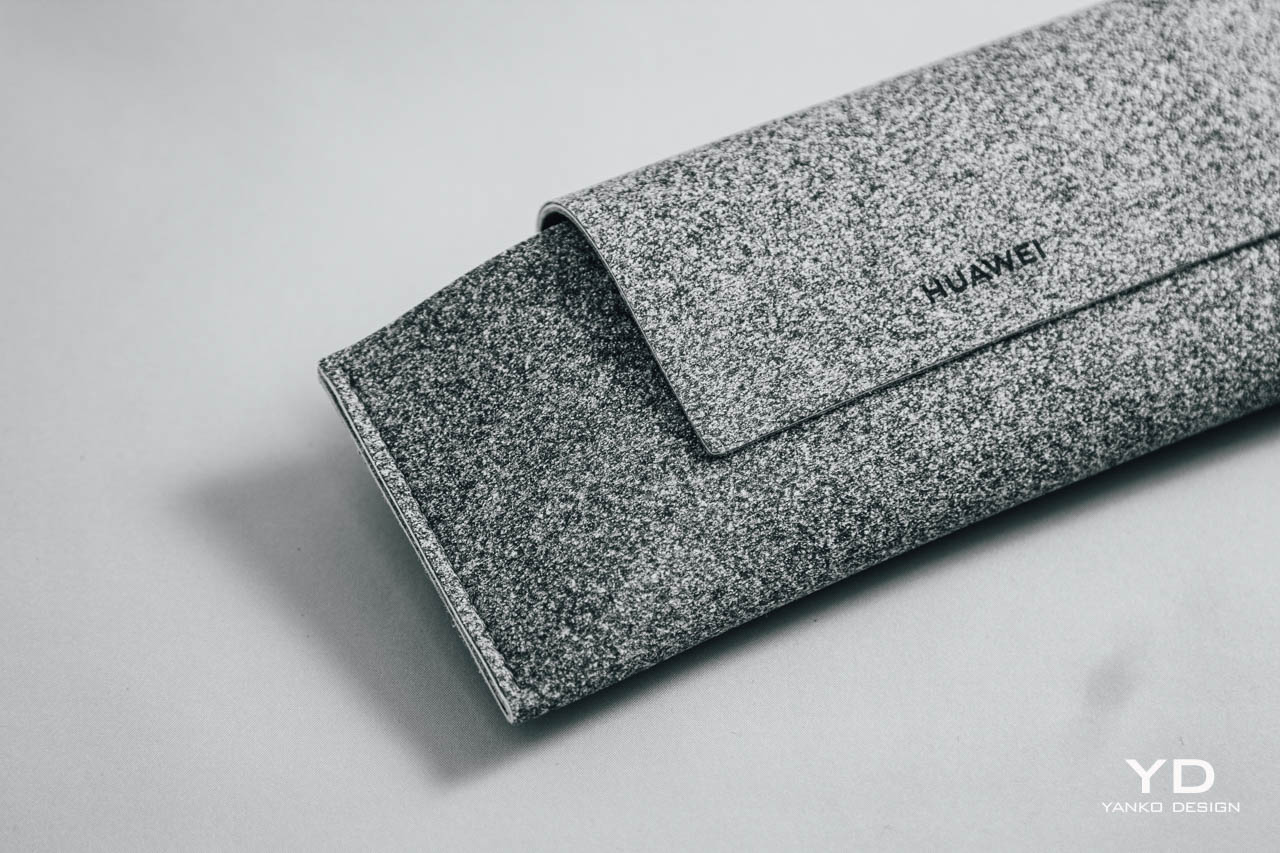
The User Experience
My overall impression of the UX can be boiled down to two simple words – needs work. Just like any first-iteration product ever made, whether it’s the first MotoRAZR, the first Pixel Watch, or even the first Nothing phone, I have a principle that I often encourage everyone to live by – The first iteration will always have a few flaws. If you want to avoid early adopters’ remorse, buy the second iteration. Design is an iterative process, and you can only solve problems after you identify them. The job of the first product, in a lot of ways, is to help identify those problems. Users express their concerns, and it’s only after they do that companies can build a second, better, more user-friendly product. To that end, it seems like HUAWEI’s Eyewear (given that it’s the company’s first independently-made smart glasses) needs a little fine-tuning. As far as its tech goes, it works rather well. The Bluetooth connection feels incredibly seamless and works up to 20 feet comfortably. The battery life is good, although I don’t know what the battery’s overall lifespan will be. The audio quality is acceptable, but the low-end frequencies need work, and the wind-canceling on the microphone needs a little reconsideration too. The lack of private listening honestly feels like a given at this point, and I don’t see it as something that’s realistically achievable, although I’m probably the harsh skeptic here. There are, however, a few rather glaring concerns I have. For starters, the glasses boast swappable front halves, but this seems easier said than done. At the risk of breaking the hardware, I decided not to apply too much pressure to decouple the front from the temple stems. The second problem I have is with the temple stems themselves. There’s no physical/visual/tactile demarcation that tells you where the touch-sensitive area on the temple stems lies. I found myself struggling to find the right place to tap, swipe, pinch to input my gestures, and it feels like something that will require a long, arduous learning process. A simple matte patch on the glossy plastic temple stems could have easily solved this problem. Finally, and perhaps my biggest concern yet, is the fact that this product brings planned obsolescence to eyewear. When I buy a new pair of spectacles, I wear them for nothing less than 5 years… although my gut tells me the battery on these temple stems don’t have a lifespan that long. This effectively means I have to replace my temple stems every 2-3 years to retain my spectacles – a feature that I personally don’t see myself doing. If it’s any consolation, I don’t really consider myself being the target audience for this eyewear anyway, because Huawei’s website doesn’t indicate whether I can get prescription lenses fitted into these spectacles. For other people who just like the idea of having spectacles/sunglasses with audio devices built into them, I’d say it’s worth a shot. It’s priced at roughly $240 too (converted from its Malaysian price), which places it somewhere in the mid-range tier. Don’t expect it to blow your mind, but if you’re open to pleasant surprises, the HUAWEI Eyewear will certainly deliver.

The post HUAWEI Eyewear Review: AirPods for your eyes?? first appeared on Yanko Design.
from Yanko Design

0 Comments